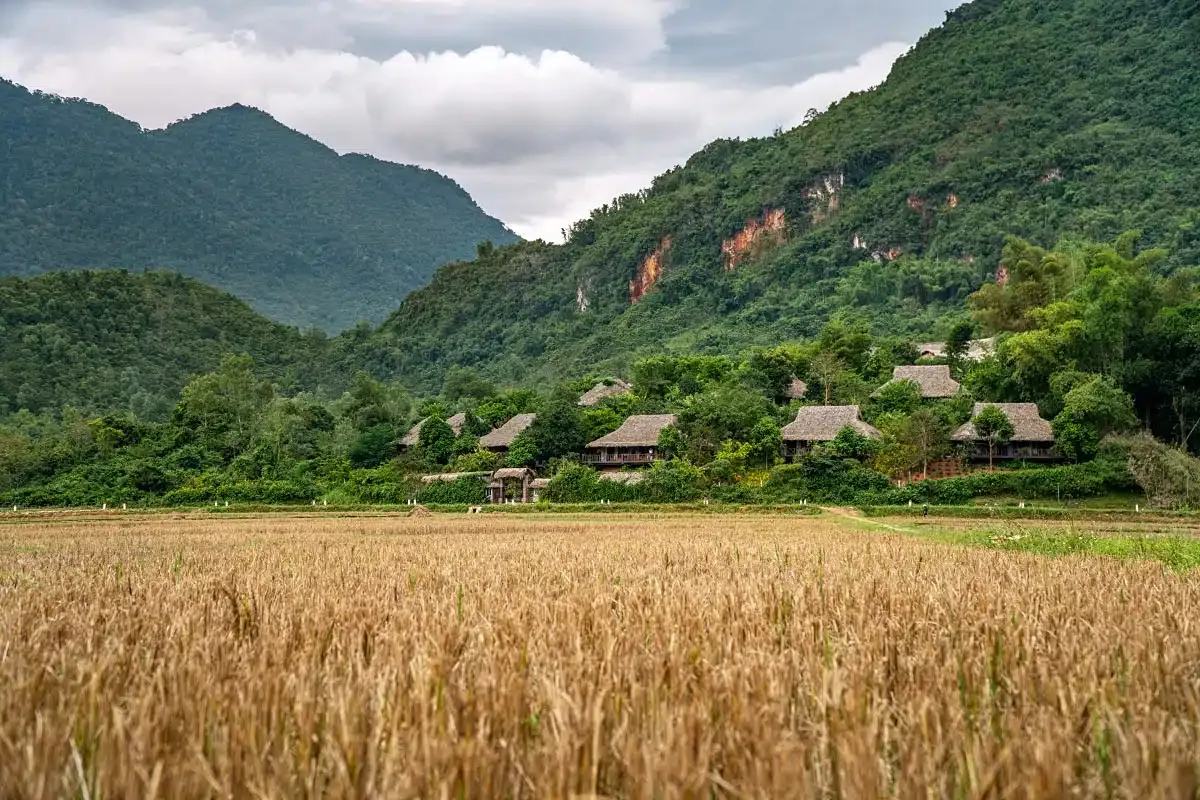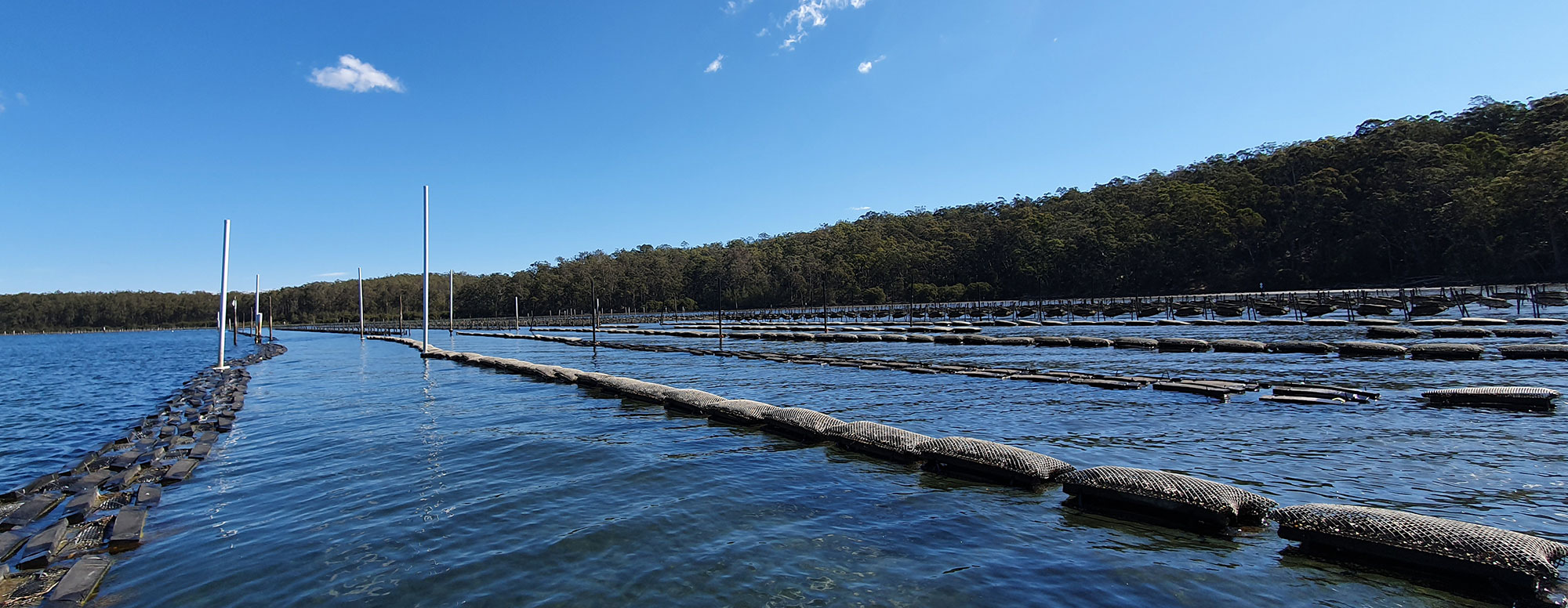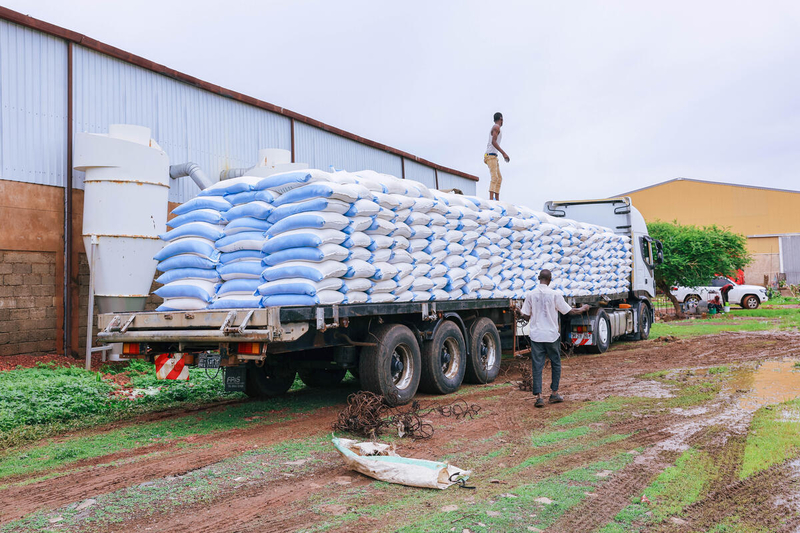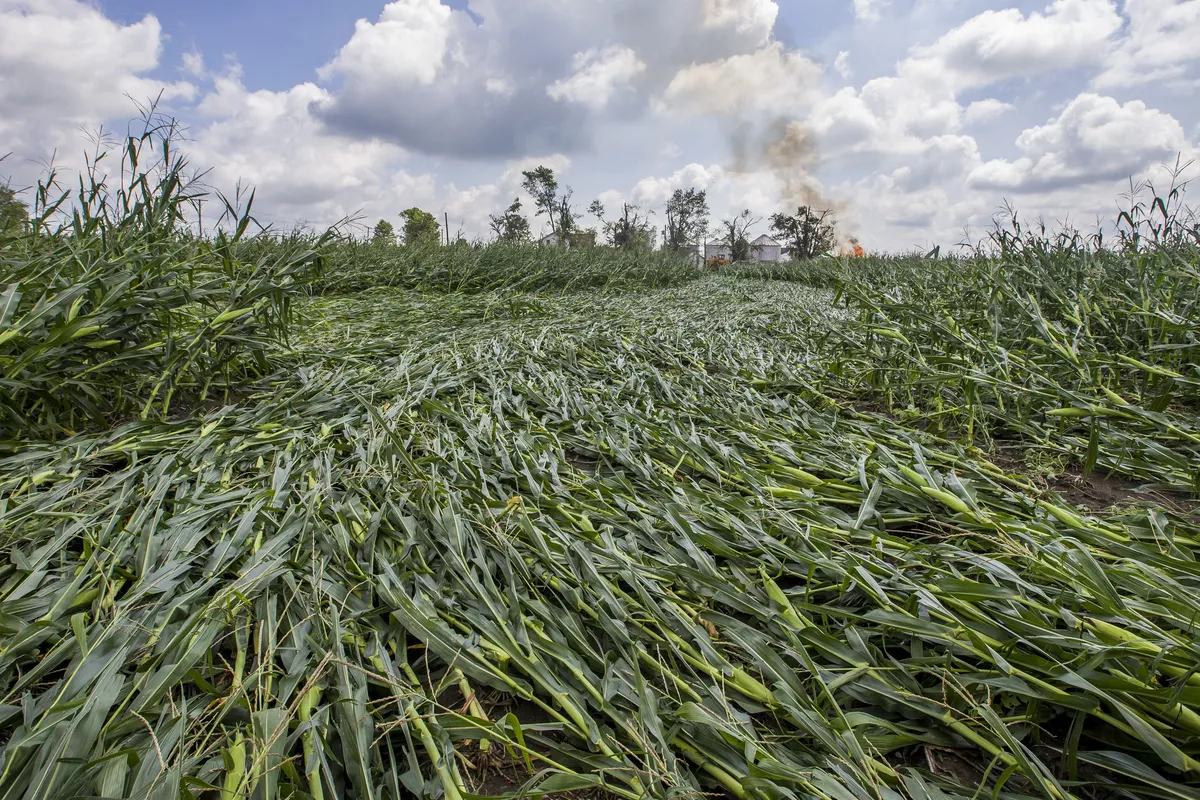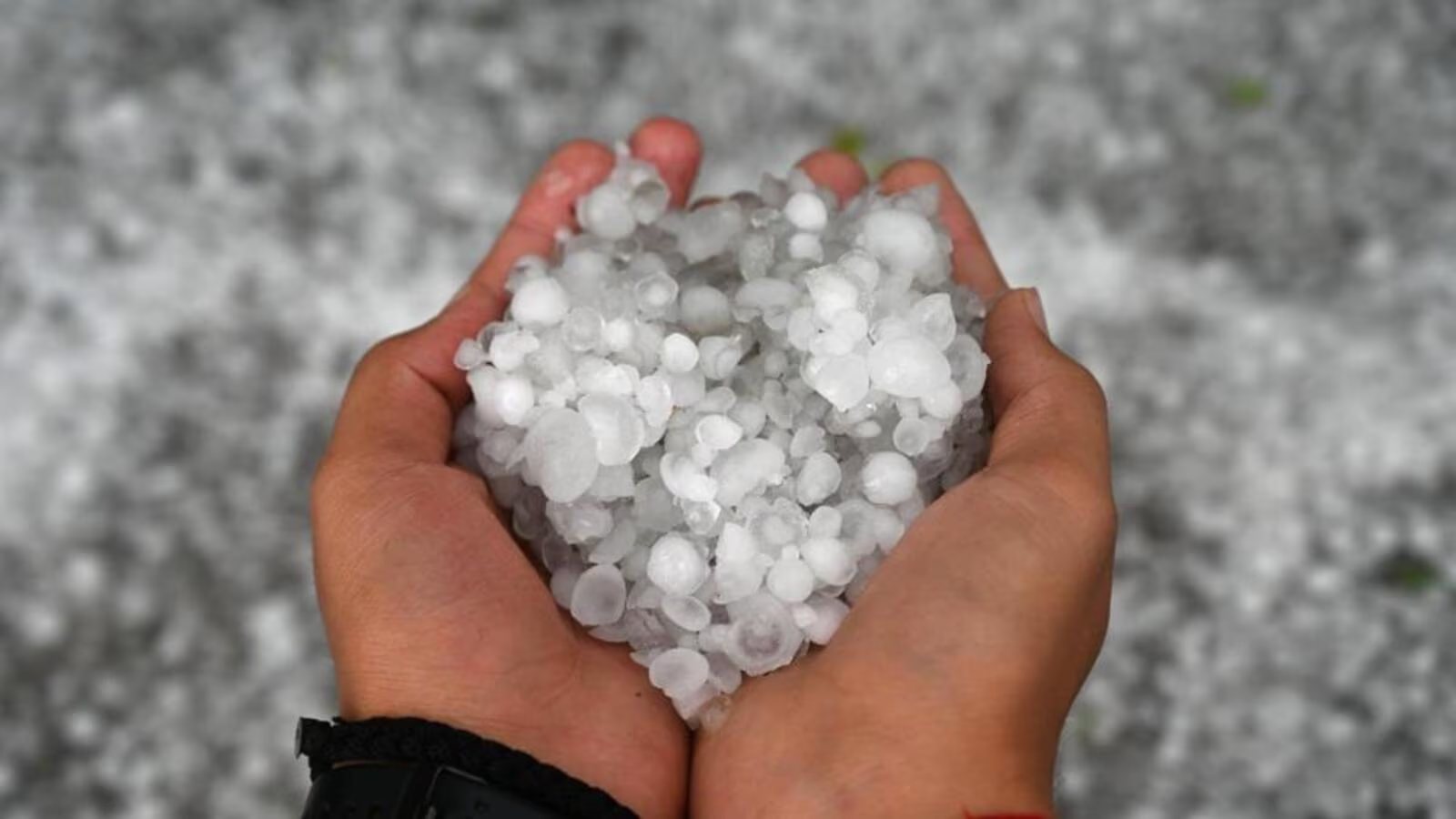During the 2023 crop forecast webinar, Eric Hostalnou explained that the sector is “facing an unprecedented situation this year.” The current weather conditions, the drought in Spain and France as well as the recent floods in northern Italy, make it very difficult to estimate the losses that these events will generate. “It is therefore more a question of potential production than of actual forecasts.”
The data will be updated around mid-June on the medFEL website.
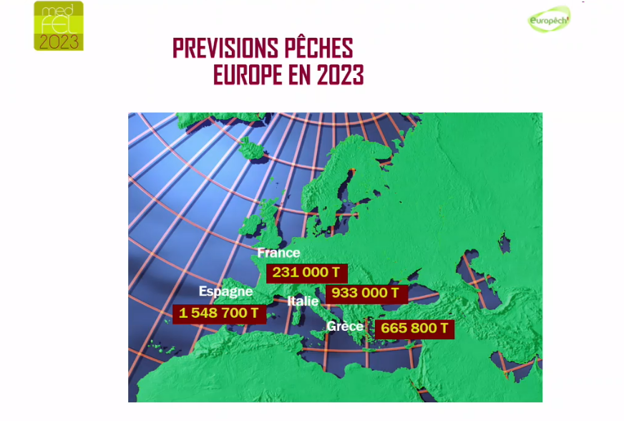
2022 figures for comparison: 228,800 tons for France, 1,033,100 tons for Spain, 1,014,200 tons for Italy and 699,300 tons for Greece
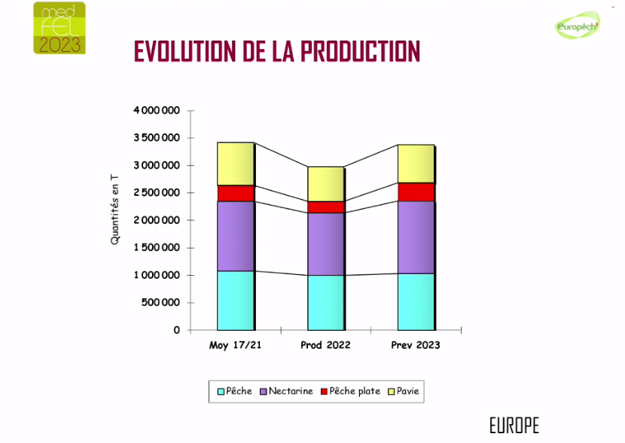
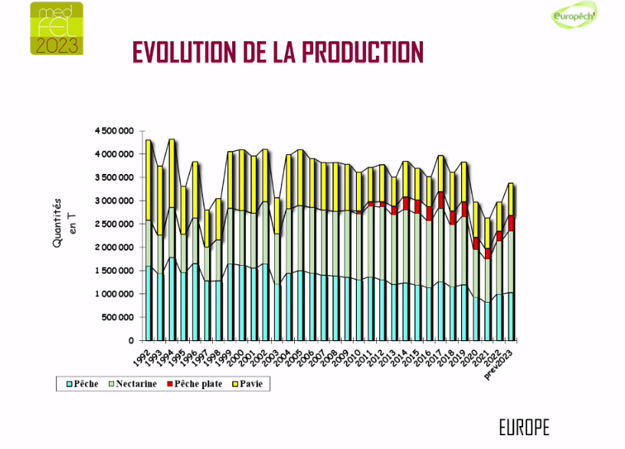
Evolution of the production from 1992 to 2023
France: the drought threatens the 2023 campaign
After two deficit years due to climate issues, 2022 was very positive for the French production both in terms of production and marketing, thanks especially to the very weak competition from Spain. Calibers are smaller but the taste quality is exceptional, according to Bruno Darnaud. In terms of marketing, “consumers are really present! Consumption is stimulated by great promotional actions in the stores.”
For this 2023 campaign, the production should be very close to that of last year, within 1%. The production potential is estimated at 230,000 tons.
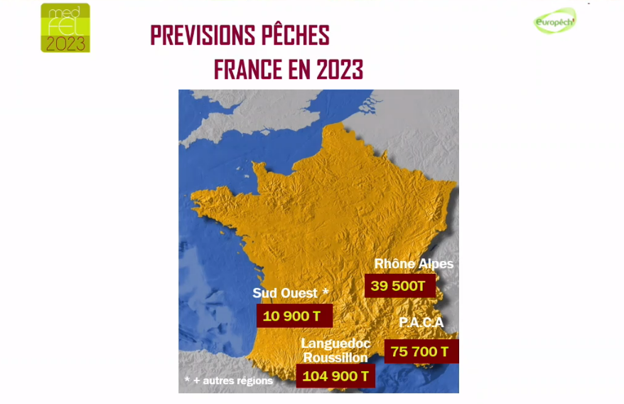
2022 figures for comparison: Rhône-Alpes 42,300 tons, Southwestern France 15,400 tons, PACA region 73,000 tons and Languedoc-Roussillon 99,100 tons.
“Water will be the main challenge of this 2023 campaign,” warns Bruno Darnaud. “We are going to follow the climate evolution very closely.” There are many drought warnings in the south-eastern departments, especially in the Eastern-Pyrenees, the most affected department where part of the French stone fruit production is produced. "We will wait to see how it evolves in the coming weeks. For now, the situation is almost normal in terms of quantity. A drought could have an impact on sizes and quantities.”
*No harvest losses have been reported yet as no one knows yet how the situation will evolve. It is very difficult to make forecasts.

Rhône-Alpes: normal production potential, around 40,000 tons of peaches and nectarines
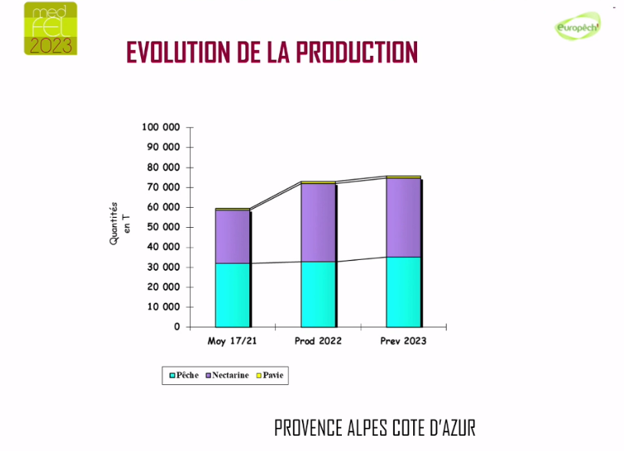
PACA: 2017/2021 affected by frost. This year, no weather hazard to report even if the area suffers from a water shortage.
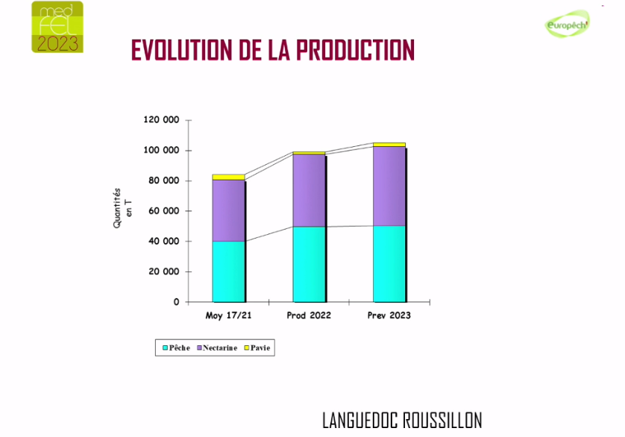
The Languedoc-Roussillon is facing a historical drought and water restrictions
Spain: Catalonia is the most affected by drought
The 2022 campaign was strongly marked by the frost, especially in the northern part of the country, in Aragon and Catalonia, which alone represent 70% of the stone fruit production. The Spanish production was therefore reduced by nearly 40%. “2022 was a good year in terms of prices but bad in terms of volumes,” explains Javier Bassols.
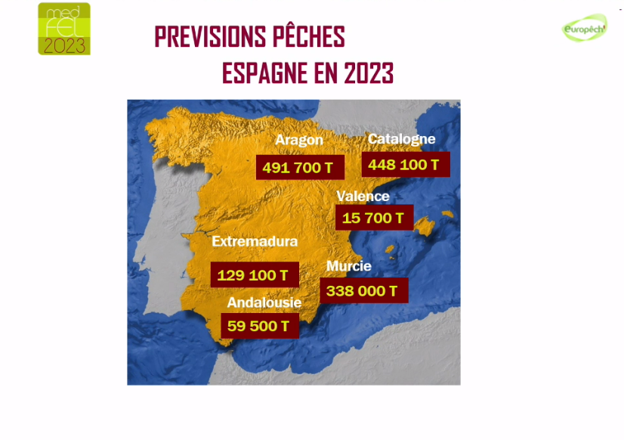
Figures 2022: Aragon 238,800 tons, Catalonia 206,300 tons, Valencia 12,700 tons, Extremadura 129,900 tons, Murcia 328,000 tons and Andalusia 64,400 tons.
For 2023, Spain is facing an intense drought, and the most affected region is Catalonia. “We start this campaign with a significant lack of water,” explains Manel Simon. Forecasts are still difficult to make regarding volumes and quality. There will be an update in a few weeks.
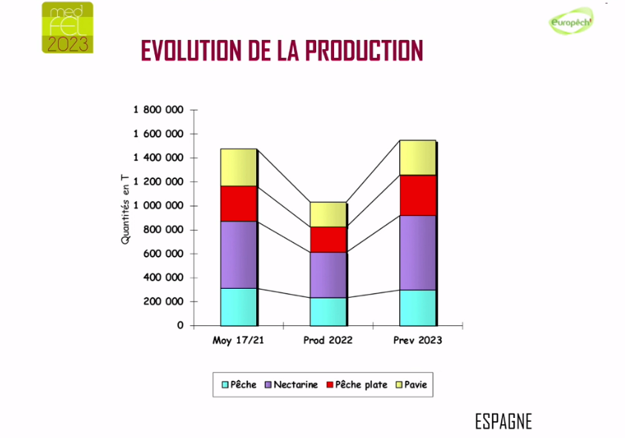
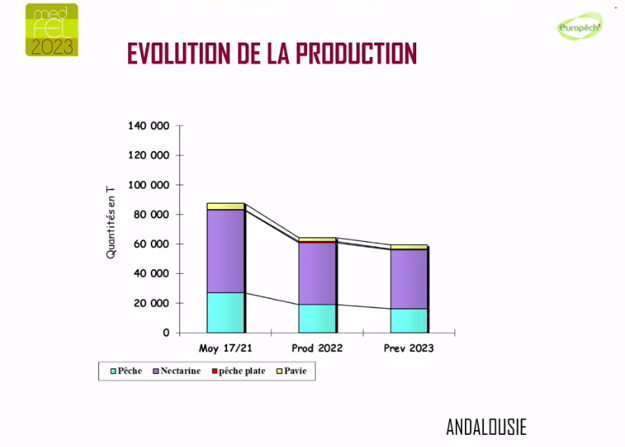
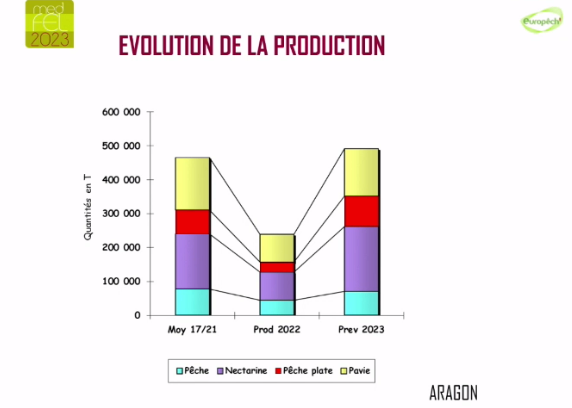

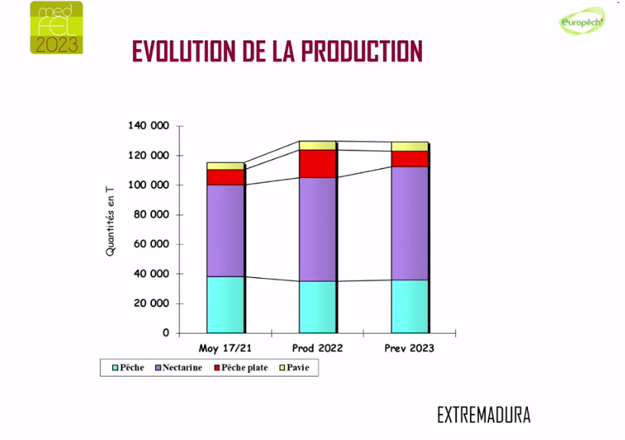
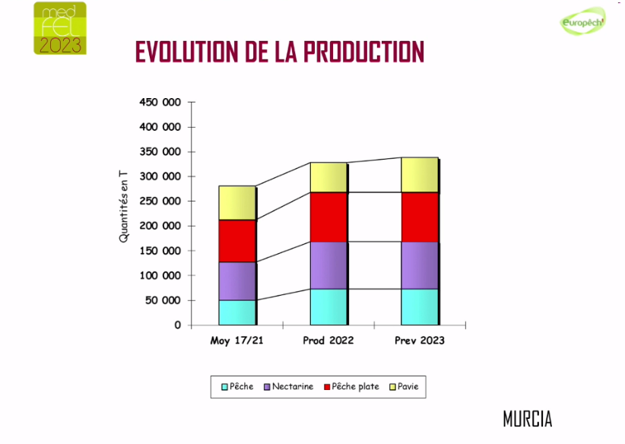
Italy: no forecast due to floods in Emilia-Romagna
After serious production problems linked to the frost in 2021, which affected most of the production basins, 2022 was characterized by a normal supply and good levels. But Italy is faced each year with a decrease in surface areas, so “2022 may not reach the potential of the previous years," explains Elisa Macchi. Like France, Italy has been able to take advantage of smaller Spanish production and lack of competition.

Figures for 2022: Piedmont-Lombardy 92,300 tons, Veneto 36,400 tons, Emilia-Romagna 188,800 tons, Centre 55,600 tons and South 641,100 tons
This year 2023 is marked by the very significant floods that occurred in Emilia Romagna on May 17th and 18th. “A disaster”, according to Elisa Macchi. “It is not yet possible to evaluate the damage. The production will probably be lower than the forecasts made a few weeks ago. We have to wait to see the quantity of damaged trees. At the moment, it is impossible to communicate exact figures.
In the other production basins (not affected by the floods), as in southern Italy which represents more than half of the Italian production, the potential is slightly higher this year. There is however a small decrease in production in Veneto and Piedmont affected by the frost and the decrease in surface areas in recent years.
Greece: slight decrease in production
The first half of the 2022 campaign was “correct”, but from August onwards, prices fell due to the poor weather conditions. The rain also damaged the quality of the fruits. In September, prices recovered but it was the end of the season.
In 2023, Greece has not suffered from any weather hazard. The production should be almost identical to last year, with a slight decrease in peaches/nectarines (-5% compared to 2022), and a more significant decrease for pavia peaches (-4%). The country should therefore reach a total of 665,000 tons this year, close to the production potential.

Source - https://www.freshplaza.com






